WACCEM News
Recent News
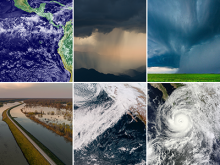
WACCEM Pushes Groundbreaking Research on Modeling the Water Cycle and Extreme Events
A scientific focus area in DOE’s Earth and Environmental System Modeling (EESM) Program studies the roles of large-scale circulation and convection in the water cycle and the implications for variability and multidecadal changes of extreme events
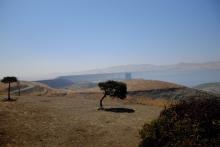
Deadly heat waves to be more frequent, intense
New climate research shows stronger heat domes could happen more often as the climate changes.

Maps show which parts of California are not prepared for extreme storms
Climate change has made precipitation more extreme, and national standards aren’t keeping up, according to a new study by researchers at First Street Foundation, a science and technology nonprofit.
National Climate Report

Who’s to blame for climate change? Scientists don’t hold back in new federal report
"It’s important for us to recognize that how much climate change we will be experiencing in the future depends on the choices that we make now," said Leung, a climate scientist at the Pacific Northwest National Laboratory and lead author on the earth sciences chapter.
National Climate Assessment Launches Fifth Edition, Leverages PNNL Expertise
The White House announced the release of the Fifth National Climate Assessment (NCA5) to spotlight a key report that details the best available science and understanding of climate change impacts across the United States.
Climate change altering U.S. in profound ways, major report finds
A sweeping new federal report finds the effects of climate change are increasingly evident across the U.S., from the Florida Keys to Alaska, and argues for transformational adaptation policies and steep emissions cuts.
Here’s how bad climate change will get in the US-and why there’s still hope
Hot off a summer of record heat, a savage wildfire that destroyed Lahaina, and hurricanes that rapidly intensified into monsters, the United States today released its Fifth National Climate Assessment.
Other News

The weather is getting cold. Global warming is still making weather weird
Intense storms have become more frequent and longer-lasting in the Great Plains and Midwest in the last 35 years. What has fueled these storms? The temperature difference between the Southern Great Plains and the Atlantic Ocean produces winds that carry moisture from the Gulf of Mexico to the Great Plains, according to a recent study.
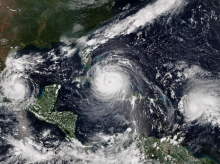
Climate change could push more hurricanes toward US coasts, new study suggests
Climate change will likely make hurricanes stronger and cause them to hit the U.S. East and Gulf Coast more often in upcoming decades, according to a new study published Friday.
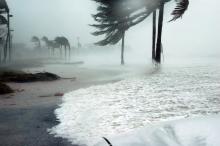
Heat-driven shifts in wind patterns could increase hurricane risks along US coastlines, researchers say
Global warming isn't just increasing the amount of moisture in the atmosphere -- it's also capable of shifting wind patterns, which will further increase hurricane risk in the U.S., according to new research.
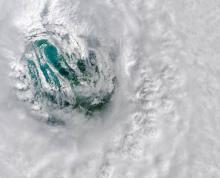
Atlantic hurricanes are getting stronger faster than they did 40 years ago
The probability of a weak hurricane strengthening to become a major hurricane within 24 hours has more than doubled in recent decades.
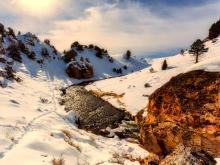
California winters could be drier than climate models predict, researchers find
Climate models may be overestimating projected increases in California's winter precipitation, according to a new study by federal researchers.
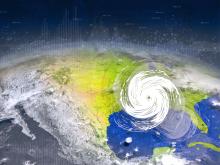
Hurricanes are escalating more quickly than ever. Here’s why.
We’re getting better at predicting these monster storms—but they're still hard to detect early enough to prepare for destruction.

Atlantic hurricanes’ rapid growth spurts are intensifying
Over the past three decades, wind speeds in the strongest storms have increased more rapidly in some areas.

Pacific Ocean typhoons could be intensifying more than previously projected
Changes to the uppermost layer of Earth's oceans due to rising temperatures are likely causing an increase in intense Pacific Ocean typhoons, suggesting strong typhoons may occur more frequently than scientists project in the coming decades, according to new research.
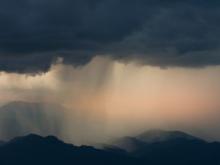
More frequent, more intense and longer-lasting storms cause heavier spring rain in central US
Intense storms have become more frequent and longer-lasting in the Great Plains and Midwest in the last 35 years. What has fueled these storms? The temperature difference between the Southern Great Plains and the Atlantic Ocean produces winds that carry moisture from the Gulf of Mexico to the Great Plains, according to a recent study.

Let it rain. The science behind today’s rainfall trends
Atmospheric scientist, Darrel Baumgardner, researches the intriguing technique of cloud seeding.
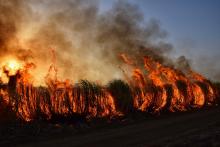
Fires, droughts and hurricanes: what’s the link between climate change and natural disasters
One of the most destructive fire seasons in California history keeps getting worse, with three wildfires driven by Santa Ana winds burning brush and homes in the Southland. At the other extreme, four hurricanes — Harvey, Irma, Maria and Nate — have made landfall in the U.S. this year, the first time in more than a decade that so many have done so.

Storm surges are the worst part of a hurricane and will get even more destructive
As Hurricane Irma bore down on Florida, the water between the storm's center and the shoreline bulged. Mighty winds whipped the Atlantic Ocean into a mound. Extraordinarily low pressures allowed it to rise even higher. This bulge, the storm surge, took up so much water that long stretches of the Caribbean coast went dry. The hurricane had flailed the ocean into an unfamiliar shape.